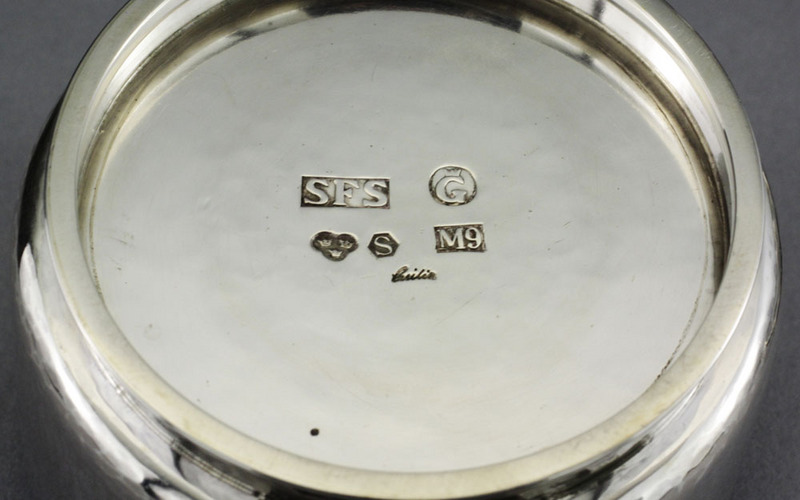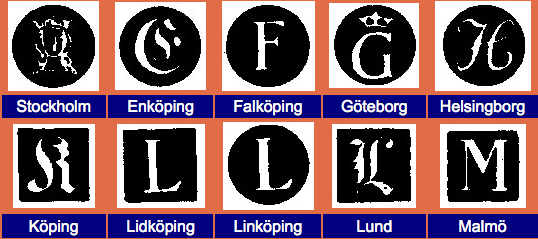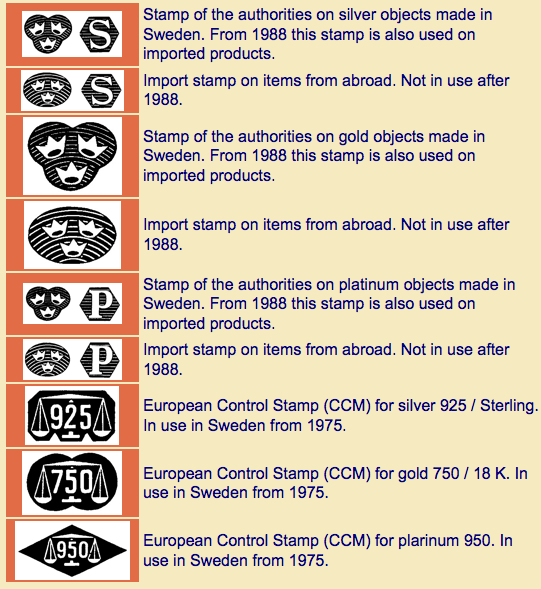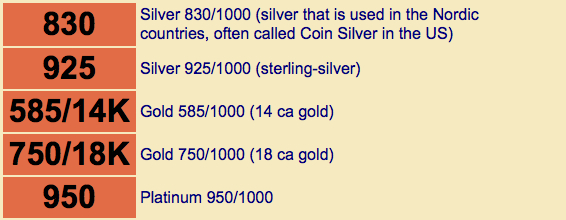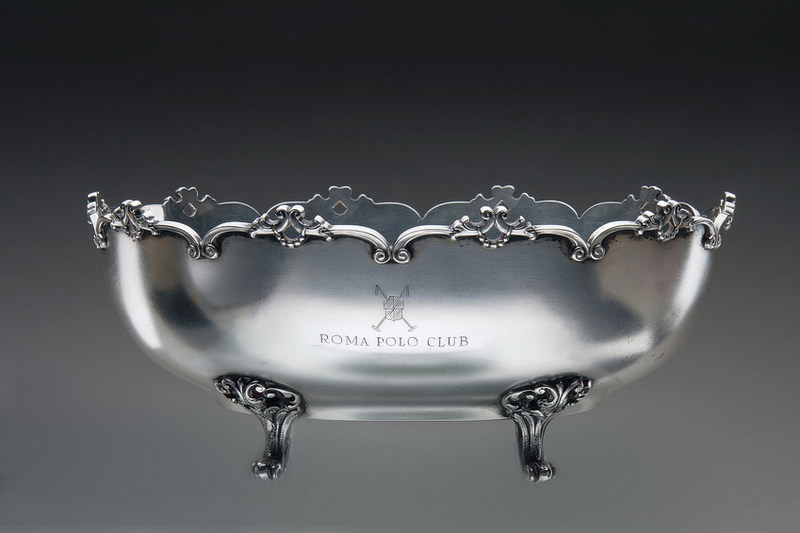Swedish silver is usually marked with quite a few hallmarks that documents the origin of the object and dates it. This article will give the basic principles for reading these hallmarks.
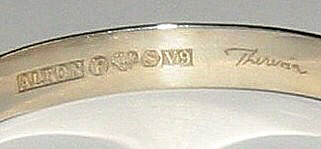 The hallmarks on this photo are found on a bracelet designed by Theresia Hvorslev. It was made for the company Alton, located in Falköping in 1971. All this information is readable from the hallmarks. The first hallmark is the makers mark of the goldsmith or the company that either made the object or imported it to Sweden. This is typically either two our three letters, initials of the makers name or an abbreviation of the name of the maker or company. It can also be all of the company name, as in this example; Alton. The makers marks are rectangular in shape and are registered for use at the control authorities.
The hallmarks on this photo are found on a bracelet designed by Theresia Hvorslev. It was made for the company Alton, located in Falköping in 1971. All this information is readable from the hallmarks. The first hallmark is the makers mark of the goldsmith or the company that either made the object or imported it to Sweden. This is typically either two our three letters, initials of the makers name or an abbreviation of the name of the maker or company. It can also be all of the company name, as in this example; Alton. The makers marks are rectangular in shape and are registered for use at the control authorities.
The second hallmark is the City Stamp that gives the place where the object was produced, or where the importer is located. The City Stamp for Stockholm is the crowned head of the patron saint St. Erik. Apart from this stamp all the Swedish city stamp consist of the first, or the two first, letters of the name of the city. Since there are many cities that starts with the same letter, there is a system where the letters have different style and are placed in different geometric forms. Naturally there are quite a few city stamps, and many of them looks almost the same. Further down in this article you will find a selection of marks from cities were with an important production of modern silver jewelry.
The third hallmark is a control stamp that guarantees the quality of the metal used in the production. This hallmark has three crowns and is either shaped like a cat’s foot, for objects produced in Sweden since 1754, or the crowns are placed in an oval, for objects imported to Sweden before 1988. After 1988 the cat’s foot is used on both Swedish made and imported objects. On silver objects the three crowns are followed by a S in a hexagonally shaped frame, as in the our example. On objects made from platinum this frame contains a P. There is no letter for gold. The control stamp shows that the quality of the metal has been analyzed by the proper authorities.
The hallmark with a combination of a letter and a number is the date letter, that gives us the year of production. This system for marking precious metals started back in 1759 and is still in use, although the silversmiths are no longer obliged to use date letters. Since the letter mark gives the year of production of the very piece of silver that is marked, it gives the collector the opportunity to differ between early and newer productions of designs that have been produced for longer periods. The date letters on Swedish metals seem identical to the Finnish date letters. The system is the same, however the starting year differs and because of that one needs to know the country of origin to be able to tell the year of production.
The last hallmark on this example is a designers mark, in this case the script signature of the artist who designed the object. Designer marks are unfortunately not that common on Swedish silver, and especially not on jewelry.
There are also other hallmarks that appear on Swedish metal objects. The most common is a content mark that gives the quality of the metal. This hallmark is a guarantee by the maker. It can either appear together with the guarantee mark of the authorities, or it can replace that mark.
by B. Lennart Persson & Svein G. Josefsen
Swedish Hallmarks on Silver
First – Maker’s Mark, Town Mark (Goteborg), National Mark, Silver Standard, and Date Mark (K9 = 1960)
Second – Town Mark (Linkoping), National Mark, Maker’s Mark (Barkander & Sohrling), and Date Mark (V4 = 1851)
{note} Earlier date marks are often intaglio stamped without the rectangular frame.

Sweden Dating Code • 1759 – 1974

Searchable database for Swedish maker’s marks – post 1913
City Stamps
Control Stamps
Content Stamps

